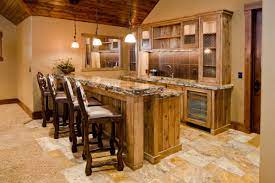Renovating your home’s staircase is a transformative project that can enhance both the aesthetic appeal and functionality of your living space. Whether you’re looking to update an outdated staircase or customize it to better suit your style and needs, there are numerous ideas and options to consider. In this article, we’ll explore the various aspects of staircase renovation, from design trends and materials to lighting, safety, and budget considerations, to help you create a staircase that truly stands out in your home.
Introduction
The staircase is often the focal point of a home’s entryway, serving as both a functional element and a design statement. Renovating your staircase can breathe new life into your home, creating a visually stunning feature that enhances the overall ambiance and value of your property. From modern and minimalist designs to classic and ornate styles, there are endless possibilities for transforming your staircase to suit your taste and lifestyle.
Assessment and Planning
Before embarking on a staircase renovation project, it’s essential to assess the current condition of your staircase and plan accordingly. Consider factors such as the layout of your home, the structural integrity of the staircase, and any specific design preferences or requirements you have. Take measurements and photographs to help visualize the space and identify areas for improvement.
Staircase Design Trends
Stay up-to-date with the latest staircase design trends to inspire your renovation project. From sleek and streamlined designs with clean lines and open risers to dramatic floating staircases and sculptural balustrades, there are endless possibilities for creating a statement staircase that reflects your personal style and elevates the aesthetic of your home.
Materials and Finishes
Choose materials and finishes that complement your home’s existing decor and architectural style. Popular options for staircase renovation include hardwoods such as oak, maple, and walnut for treads and handrails, wrought iron or stainless steel for balusters, and glass or acrylic panels for a contemporary touch. Consider the durability, maintenance requirements, and visual impact of each material before making your selection.
Staircase Lighting
Proper lighting is essential for enhancing the safety and ambiance of your staircase. Explore different lighting options such as recessed LED strip lights, wall-mounted sconces, or pendant fixtures to illuminate the staircase and highlight its architectural features. Incorporate lighting controls and dimmers to adjust the brightness and create the desired mood.
Space Optimization
Make the most of your staircase renovation by optimizing space efficiency. Consider built-in storage solutions such as under-stair drawers or closets to maximize storage space in your home. Explore space-saving staircase designs such as spiral or floating staircases to free up floor space and create a more open and airy feel.
Safety Considerations
Prioritize safety when designing and renovating your staircase. Ensure that the staircase meets building codes and safety standards regarding tread width, riser height, handrail height, and baluster spacing. Install non-slip treads or carpeting to prevent slips and falls, especially in high-traffic areas or homes with children or elderly residents.
Customization and Personalization
Add personal touches to your staircase design to make it truly unique. Consider customizing the handrail with intricate carvings or scrollwork, incorporating decorative newel posts or finials, or adding a custom-designed balustrade to reflect your individual style and personality.
Budgeting and Cost Considerations
Set a realistic budget for your staircase renovation project and prioritize features and materials based on your budget constraints. Research pricing for materials and labor, obtain multiple quotes from contractors, and factor in additional costs such as permits, demolition, and disposal fees. Be prepared to adjust your plans or make compromises to stay within budget.
DIY vs. Professional Installation
Decide whether to tackle the staircase renovation as a DIY project or hire a professional contractor. While DIY installation can save money, it requires time, skill, and attention to detail to ensure a safe and successful outcome. Hiring a professional contractor can provide peace of mind and ensure high-quality workmanship, especially for complex or large-scale projects.
Environmental Impact
Consider the environmental impact of your staircase renovation and choose sustainable materials and construction practices whenever possible. Opt for eco-friendly materials such as FSC-certified hardwoods, recycled metal balusters, or low-VOC finishes to minimize carbon footprint and support green building initiatives.
Maintenance and Longevity
Invest in regular maintenance to keep your renovated staircase looking its best and functioning smoothly for years to come. Clean and inspect the staircase regularly, repair any damage or wear promptly, and refinish or repaint as needed to maintain its appearance and protect against wear and tear. Follow manufacturer recommendations for care and maintenance to ensure longevity and performance.
Conclusion
Renovating your home’s staircase is a rewarding project that can enhance both the aesthetic appeal and functionality of your living space. By assessing your needs, exploring design options, and considering factors such as materials, lighting, safety, and budget, you can create a staircase that adds value and style to your home for years to come.

